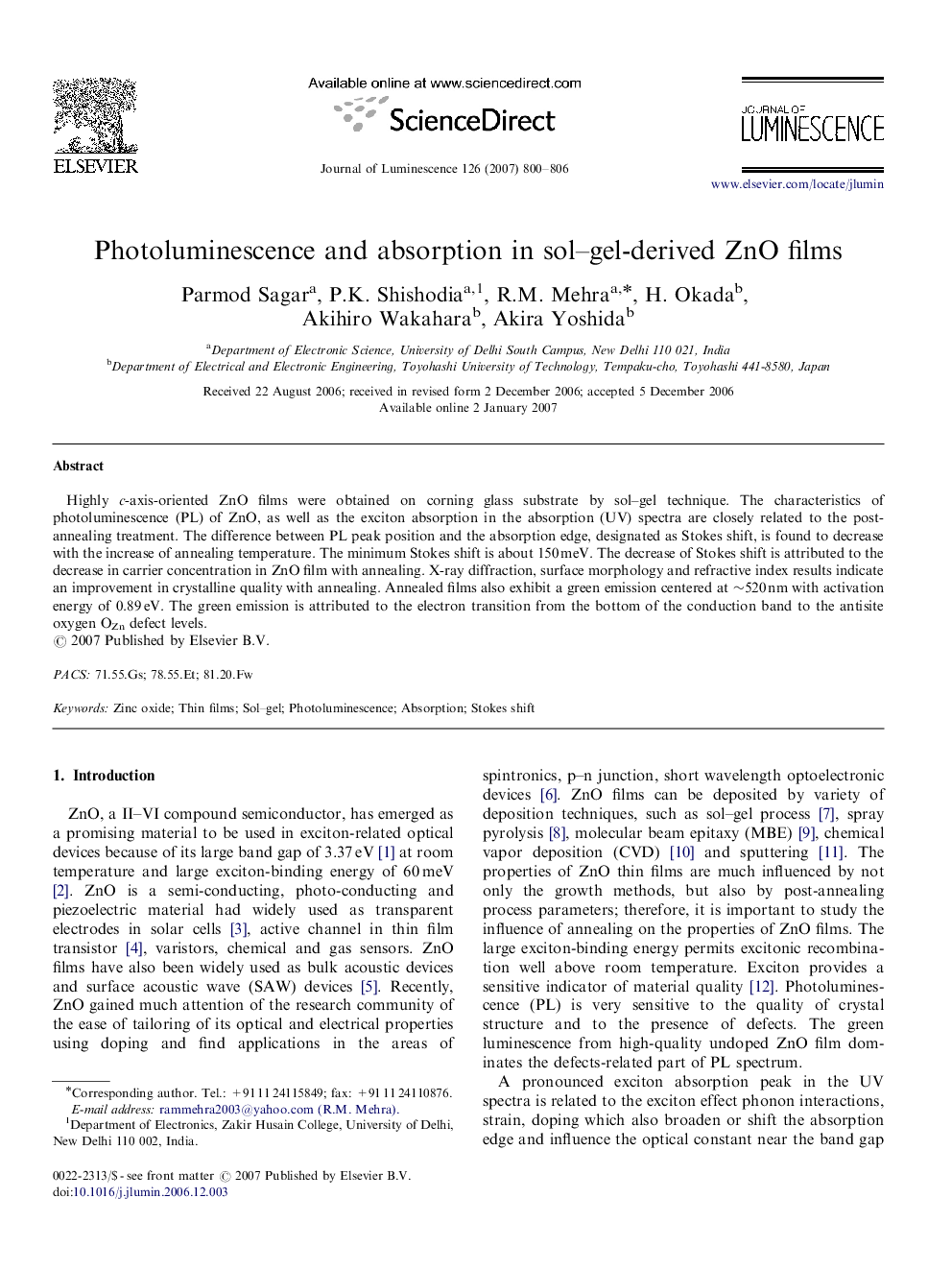| Article ID | Journal | Published Year | Pages | File Type |
|---|---|---|---|---|
| 5403409 | Journal of Luminescence | 2007 | 7 Pages |
Abstract
Highly c-axis-oriented ZnO films were obtained on corning glass substrate by sol-gel technique. The characteristics of photoluminescence (PL) of ZnO, as well as the exciton absorption in the absorption (UV) spectra are closely related to the post-annealing treatment. The difference between PL peak position and the absorption edge, designated as Stokes shift, is found to decrease with the increase of annealing temperature. The minimum Stokes shift is about 150Â meV. The decrease of Stokes shift is attributed to the decrease in carrier concentration in ZnO film with annealing. X-ray diffraction, surface morphology and refractive index results indicate an improvement in crystalline quality with annealing. Annealed films also exhibit a green emission centered at â¼520Â nm with activation energy of 0.89Â eV. The green emission is attributed to the electron transition from the bottom of the conduction band to the antisite oxygen OZn defect levels.
Related Topics
Physical Sciences and Engineering
Chemistry
Physical and Theoretical Chemistry
Authors
Parmod Sagar, P.K. Shishodia, R.M. Mehra, H. Okada, Akihiro Wakahara, Akira Yoshida,
